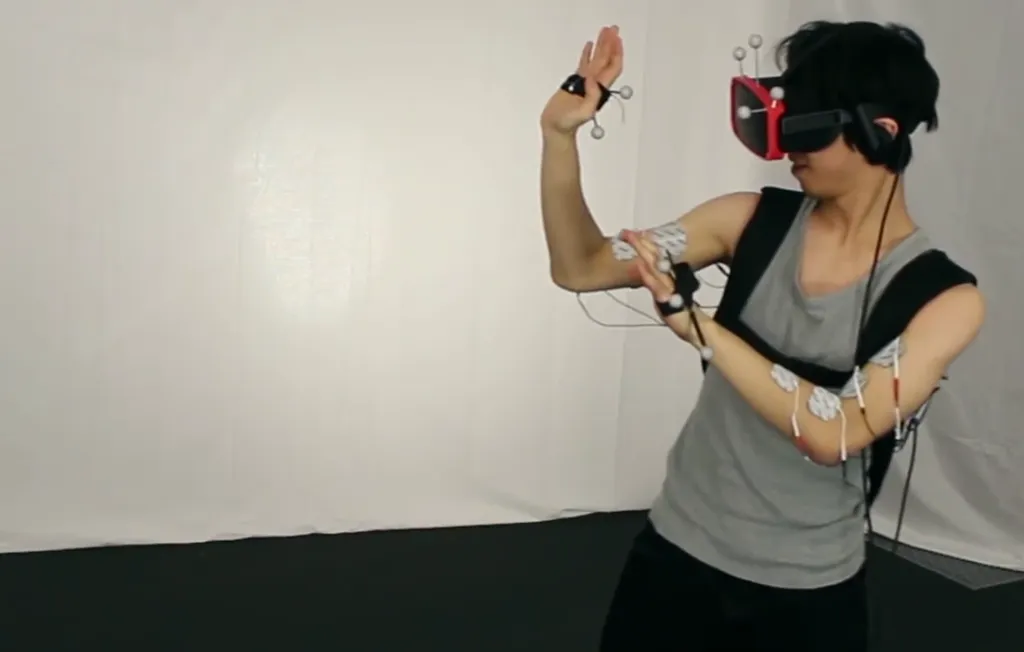We might not be able to plug into our brains and jump into the Matrix just yet, but researchers at the Hasso-Plattner-Institut in Potsdam have come up with a way to use the rest of the body to make current VR systems that much more immersive.
The research team recently revealed the below video, in which a prototype kit uses electrical muscle stimulation along a user’s arms to create what it claims is realistic haptic feedback without the need for a controller. It creates counterforce in the user’s hands when they touch objects in VR and simulates weight by actuating specific muscles. To create tension in a user’s bicep as they lift a heavy object, for example, the system actuates the triceps.
You can see the results in the video above and, although we haven’t tried the system for ourselves, it looks promising. Touching an electric wall causes the user’s hand to jolt backwards, while pushing objects requires heft and force we’re not used to applying inside the virtual world.
In the documentation, the team claims that pressure to the fingertips can even stop hands passing through objects, which is an unfortunate side effect of current VR solutions. However by effectively pulling the arm away to stop the user’s hand from advancing, the system creatues an unatural feeling, as if you were being pulled away by a magnet, not pressing up against something that won’t budge.
There’s still a lot to figure out about VR haptics, then, and we don’t know if this work could ever been turned into a certifiable product, at least in its current form. Perhaps it would be best suited for location-based VR experiences like The Void, which we recently went to see for ourselves.





























